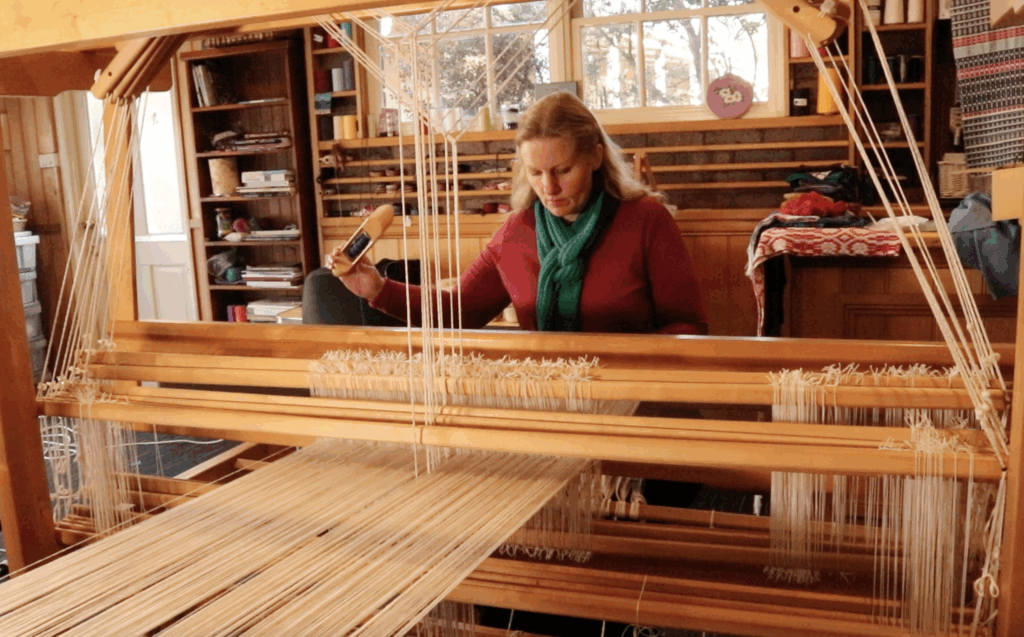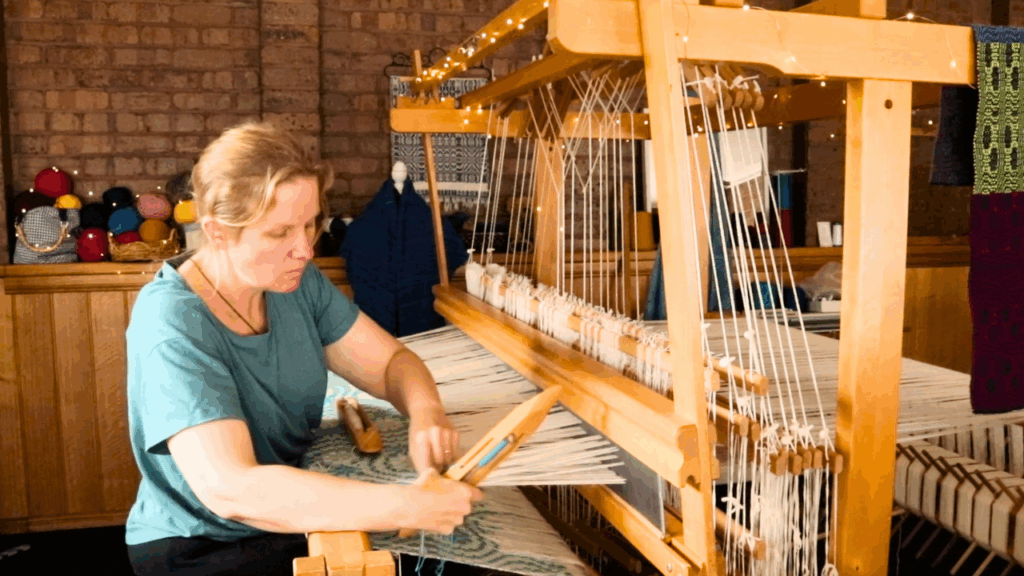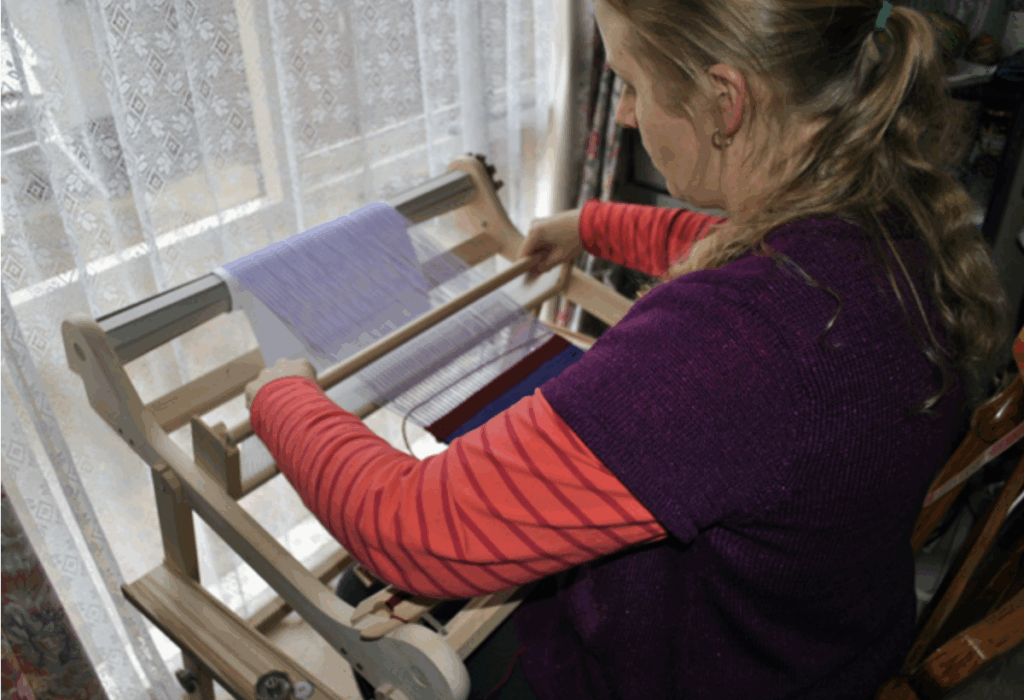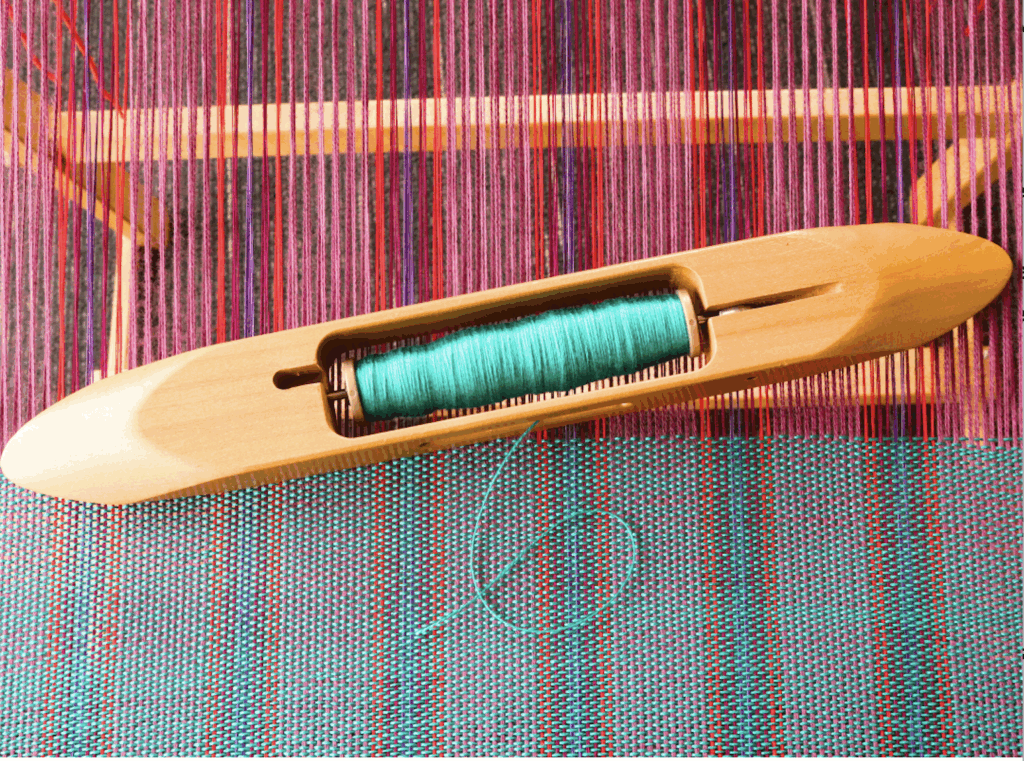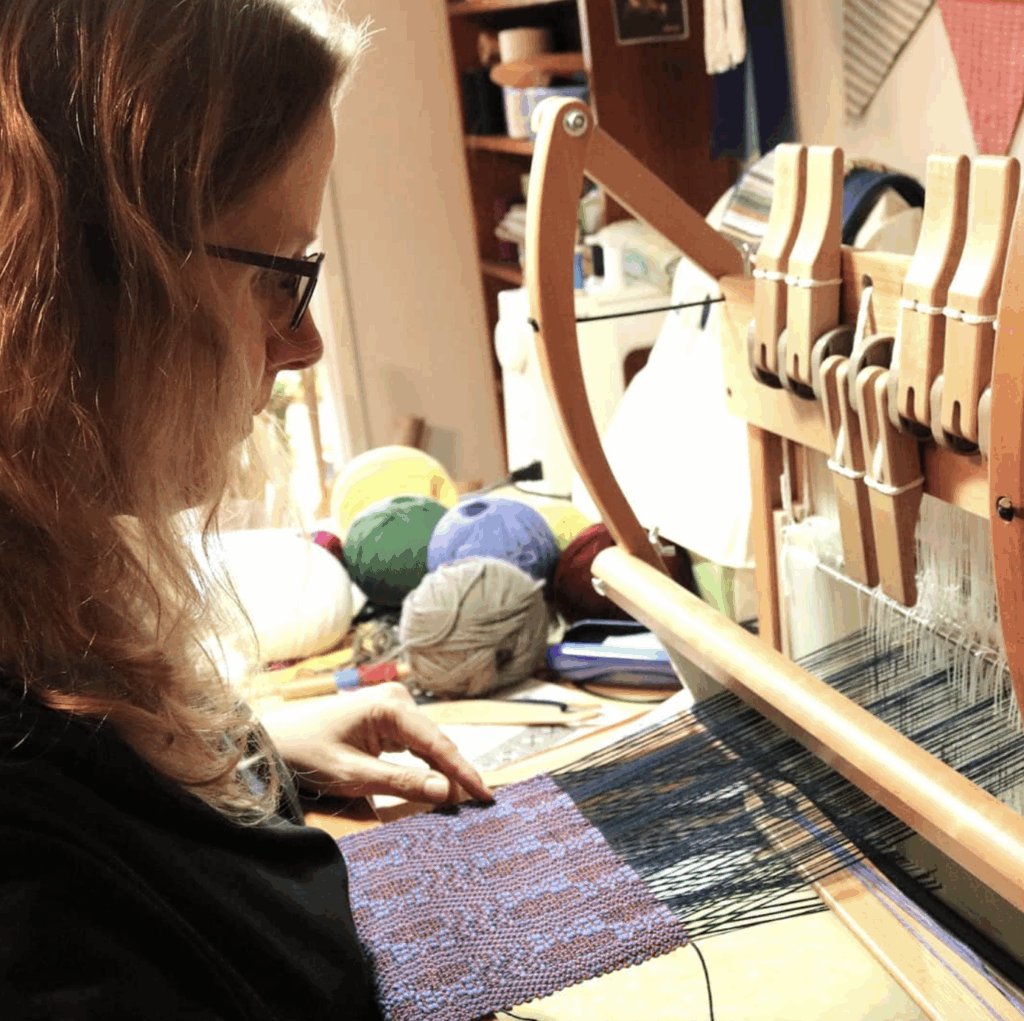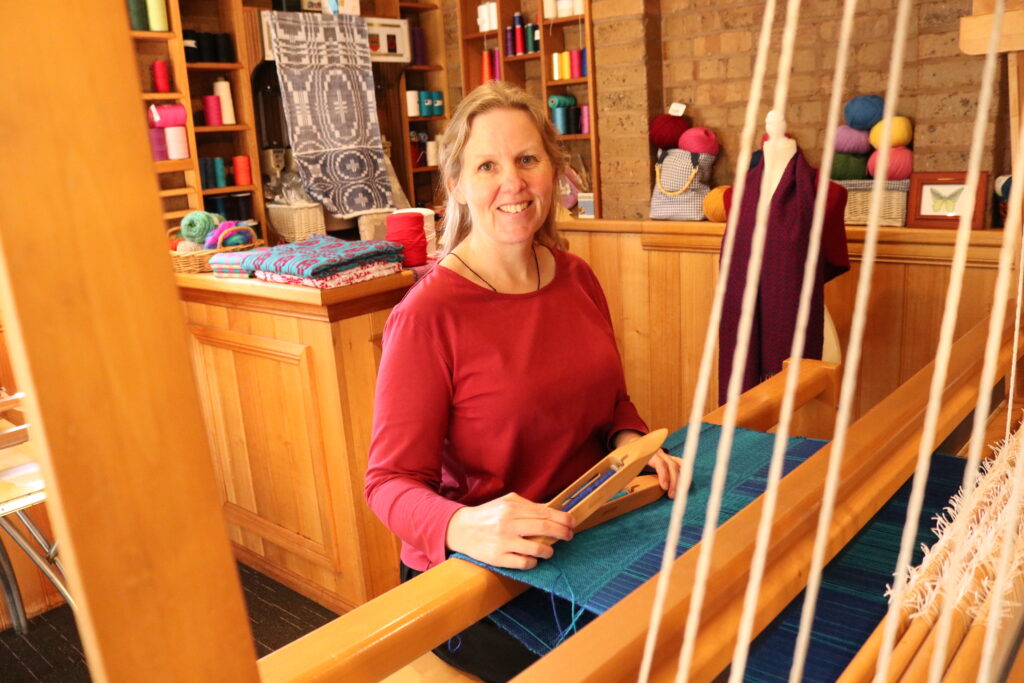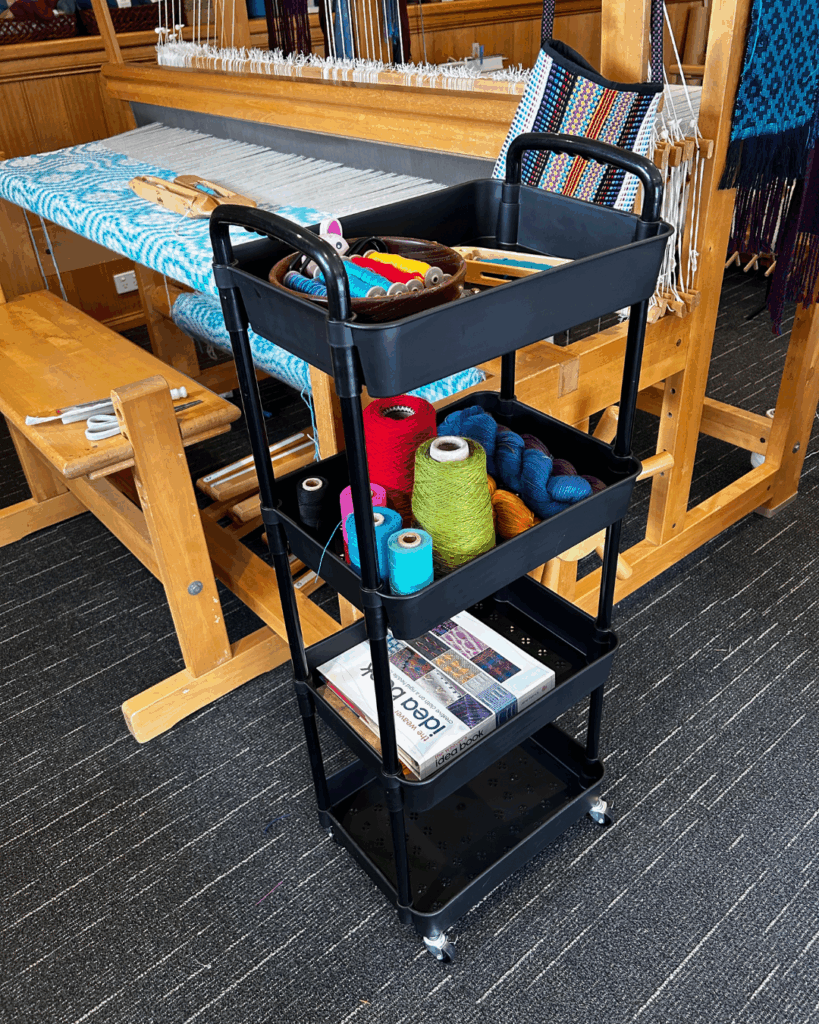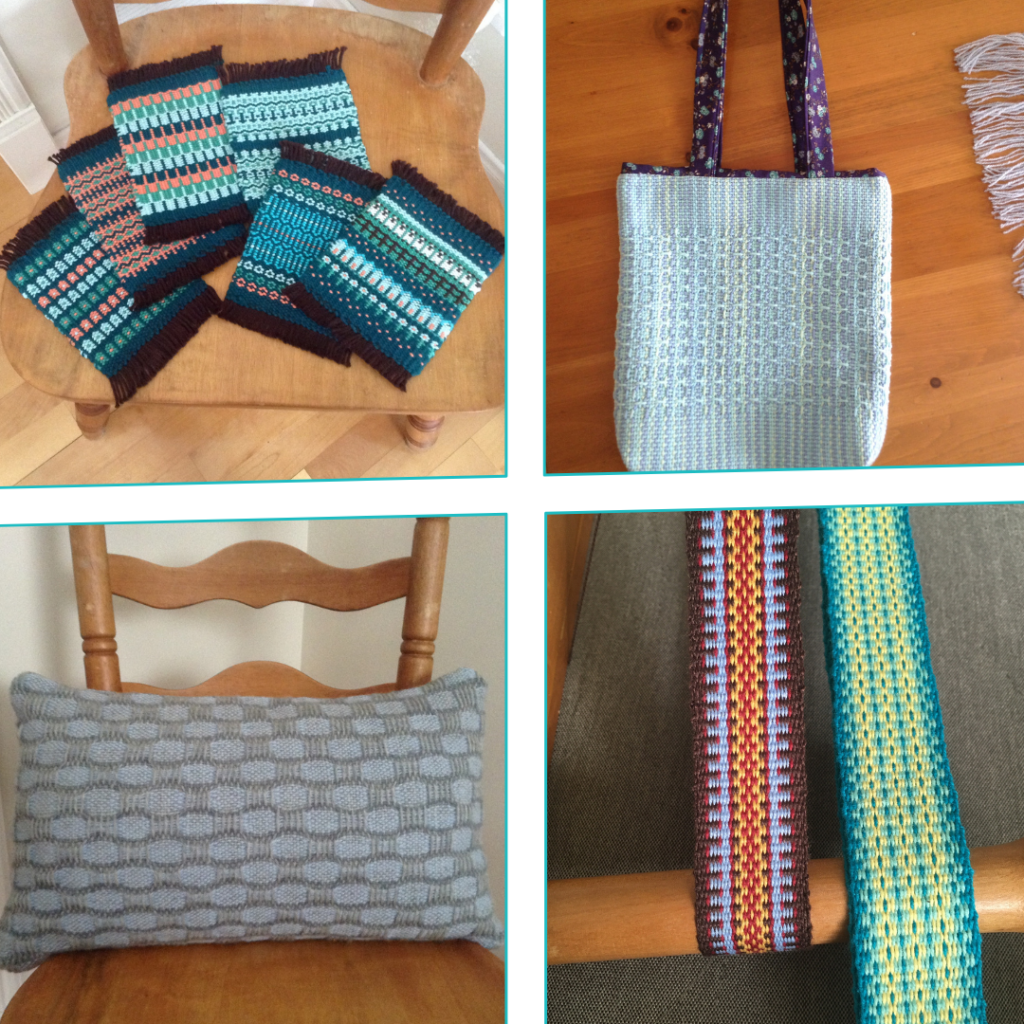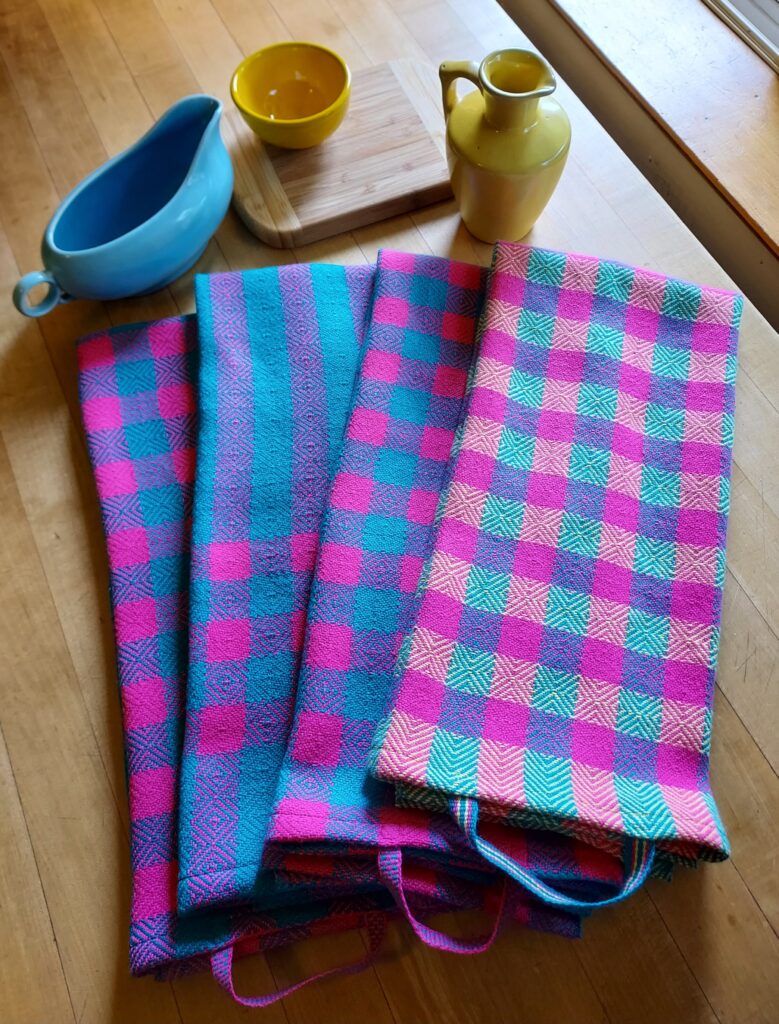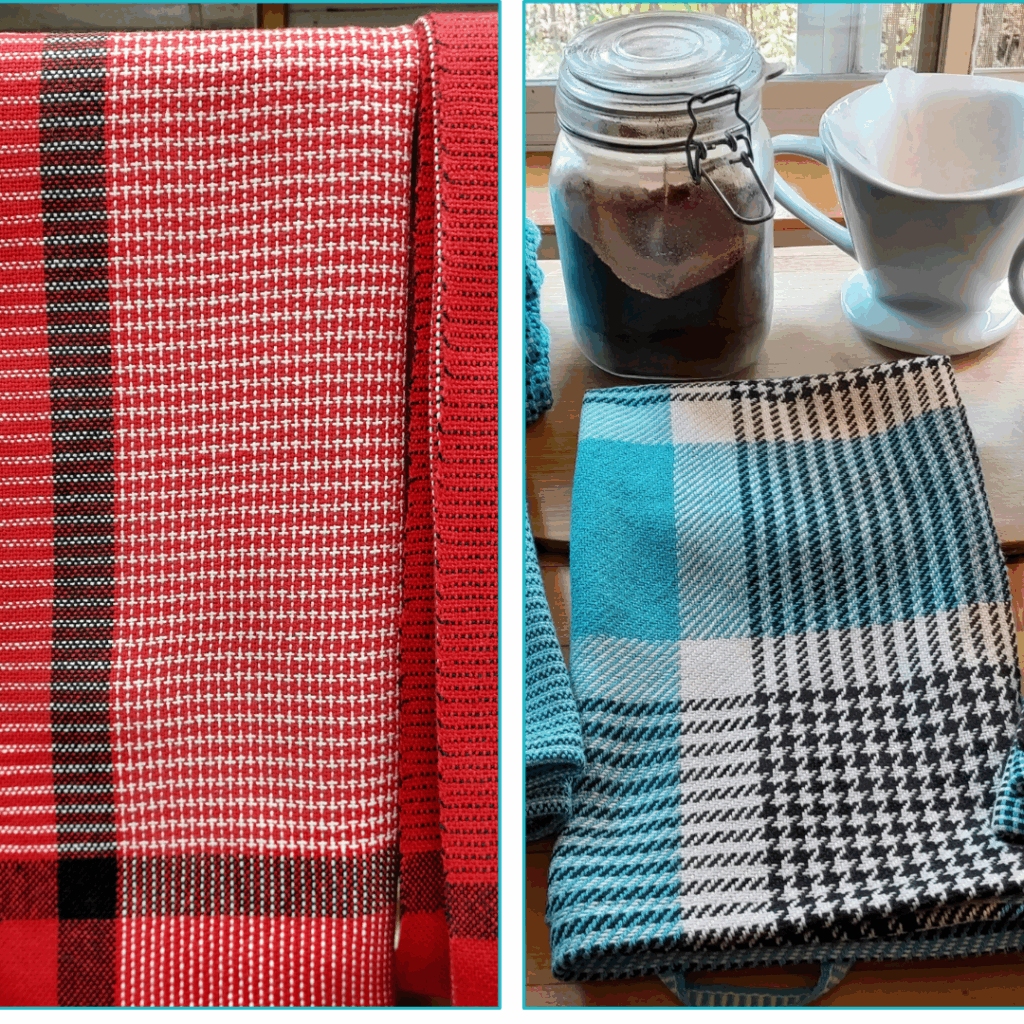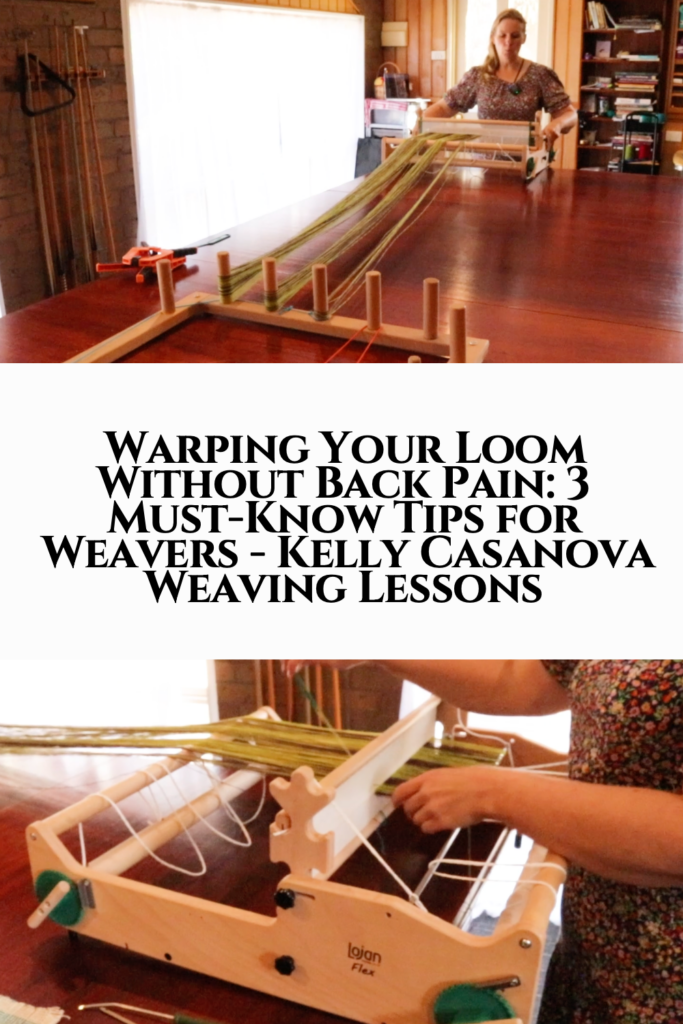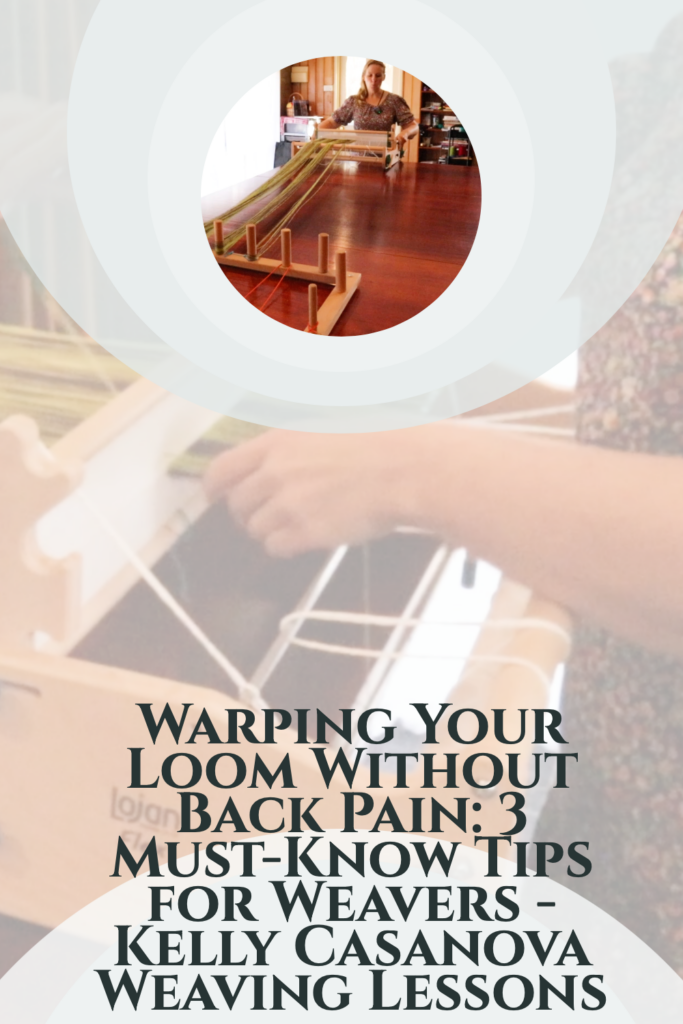How many projects is too many? 🤔 If you’re anything like me, you’ve probably got more than one project on the go at any given time. Maybe it’s a rigid heddle scarf on the loom, a tapestry sampler, some floor loom experiments, or even a non-weaving project like knitting or sewing. And maybe—just maybe—some of those projects have been “in progress” for quite a while.
Is that a problem? Not necessarily.
In fact, I’ve found that having multiple creative projects on the go can actually be a good thing—for creativity, productivity, and even self-care. But I’ve also learned that this approach doesn’t work for everyone, and even for those of us who love variety, there are a few important things to consider.

Let’s take a look at the pros and cons of juggling multiple projects at once, and how to make it work for you (rather than against you).
The Upside: Why More Than One Project Can Be a Great Thing
There are several reasons why I personally enjoy and benefit from having multiple projects in motion.
💡 It keeps me creatively inspired
When I switch between different techniques, fibres, or project types, I find it actually fuels my motivation. If I feel a bit stuck or bored with one thing, I can take a break and pick up something else that excites me.
🧘♀️ It gives my body a break
Different projects involve different movements and muscle groups. For example, weaving at a floor loom can be demanding on the legs and back, while spinning or hand-sewing is more gentle and seated. Rotating between them helps avoid repetitive strain and gives parts of my body a rest.
🎯 It helps me be more productive overall
This might sound counterintuitive, but I often finish more projects when I allow myself to work on a few at once. Why? Because I stay in the flow of creativity rather than getting bogged down in frustration or boredom with a single task.

The Downside: What to Watch Out For
Of course, having too many projects can come with its own set of challenges.
🕳️ The danger of the “unfinished” pile
Longer-term or more difficult projects can easily end up languishing while I focus on newer, shinier things. Sometimes, they’re forgotten entirely—or feel like a burden when I do remember them.
🏠 The clutter adds up
Let’s be honest—every project takes up space. If you don’t have dedicated storage, and adequate space, things can get messy fast. (Ask me how I know, I have my own studio and things still get out of hand!)
🤹 It can feel mentally overwhelming
Even when projects are tucked away, they take up mental space. That little voice saying “You really should finish that…” can start to sound pretty loud when it’s multiplied by five or six projects.
Are You a One-Thing-at-a-Time or Many-Things-at-Once Kind of Person?
This is the key question. Some people feel scattered and anxious when they have too many projects on the go. Others (like me!) thrive on at least some measure of variety.
Ask yourself:
- Do you feel inspired or overwhelmed by multiple projects?
- Are you good at coming back to things, or do you tend to move on permanently?
- Does your environment support multiple projects, or is it stressing you out?
Being honest about your tendencies, preferences and living situation can help you make better decisions for your creativity and well-being.

A Few Things to Consider Before Starting “Just One More”
Before you jump into another project, it’s worth asking:
💰 Can I afford it right now?
Some projects require buying new tools, yarns, or supplies. Do you have the budget to support more than one at a time?
📦 Do I have the space to store it?
Even small projects take up room. Is there somewhere safe and organised you can keep your work-in-progress?
📅 Am I likely to finish it—or will it join the WIP graveyard?
You know yourself best. If you’ve started five projects in the past month and finished none, it might be time to pause and focus. Be honest and know yourself for the best outcome.
What Works for Me
Over time, I’ve found a rhythm that suits both my creative energy and my practical limits.
- I usually have one main weaving project on the loom, plus one or two side weaving projects plus some other activities like dyeing, sewing, spinning, knitting or crochet.
- I use small baskets, zip pouches and tote bags (handwoven of course!) to keep WIPs organised and tidy.
- I allow myself to start something new only if it serves a creative need or solves a problem (not just to avoid a tricky bit on something else!). If there is something I’m feeling super passionate about, I will allow myself to go with that motivation and ride the wave at least some of the time.
- I keep a simple notebook list of active projects so I can easily jump back in when I have time or energy. I also add future desired projects to this list.
And most importantly—I try not to beat myself up if something takes a long time. Creativity isn’t always linear, and that’s okay.

Final Thoughts: It’s Not About the Number, It’s About the Balance
There’s no magic number of “allowed” projects. What matters is whether your projects are serving you—your creativity, your energy, your enjoyment.
If you’re the kind of person who thrives with multiple projects, embrace it (with some boundaries if needed). If you prefer one at a time, that’s great too. Either way, tune into what works for YOU in this season, and don’t be afraid to change your approach if needed.
*This post may contain affiliate links. For more information, please see my disclosure policy.
If you’re challenged by availability of space, consider whether small loom weaving would be well suited to your situation.
If you find it hard to focus or get anything done with the time that you have, check out the 10 Minute Rule to increase productivity.
I hope you enjoyed this post and feel free to share with us your own thoughts and experiences in the comments below ⬇️
Until next time…
Happy Weaving!

